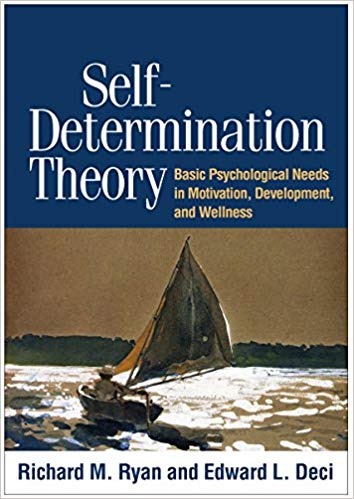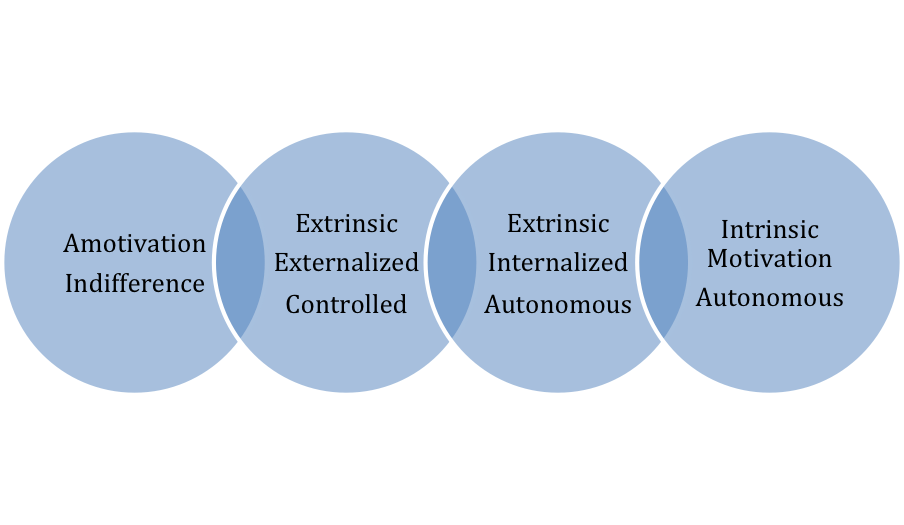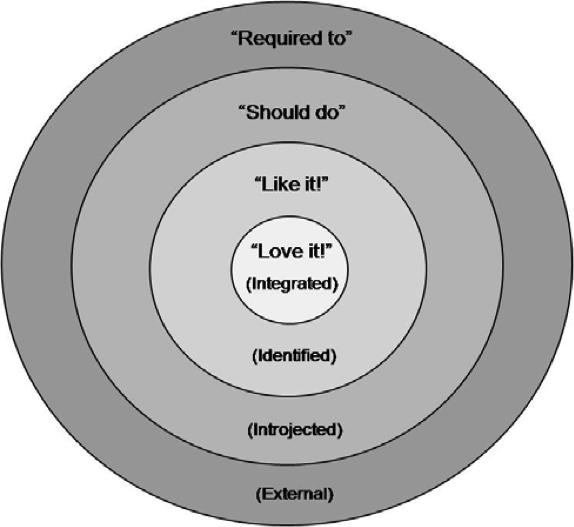The Utility of Self Determination Theory and Motivation in Wellness Coaching – Part One: Motivation

“Don’t ask how you can motivate others. Ask how you can create the conditions within which others will motivate themselves.”
Edward L. Deci
The motivation of the coaching client for change is usually seen as the foremost factor in the coaching process, yet many coaches lack adequate knowledge of this concept. Some coaches believe that is it somehow their responsibility to motivate their client. This can come across as an attempt to convince or persuade the client to become engaged in a lifestyle improvement process, urged on by a cheerleading coach. As coaches become more experienced, they usually discover that effective coaching is about helping the client to get in touch with what motivates them from the inside and build on that. One theory that can help coaches grasp the nature of human motivation and then implement it well is Self-Determination Theory.
 The life work of psychologists Edward Deci and Richard Ryan (http://selfdeterminationtheory.org) has yielded a theory of human motivation that not only fully supports the coach approach but also adds valuable tools of understanding. In complete alignment with the tenets of humanistic psychology (https://www.amazon.com/Toward-Psychology-Being-Abraham-Maslow/dp/0471293091) , Self-Determination Theory (SDT) views human beings as constantly striving towards actualizing their potential, seeking out ways to foster their growth and development. It is also very much in alignment with the Client-Centered (or Person-Centered) Approach of Carl Rogers (https://www.amazon.com/Becoming-Person-Therapists-View-Psychotherapy/dp/039575531X/ref=pd_lpo_sbs_14_t_0?_encoding=UTF8&psc=1&refRID=3WAH0XRWWQF0SM32MPZJ). Finally, it is easy to see how the way coaches trained in the ICF Core Competencies and the coaching foundations that are laid out in sources such as Co-Active Coaching (https://www.amazon.com/Co-Active-Coaching-Fourth-transformative-conversations/dp/1473674980/ref=sr_1_1?s=books&ie=UTF8&qid=1549473972&sr=1-1&keywords=co-active+coaching) work with clients are entirely congruent with SDT.
The life work of psychologists Edward Deci and Richard Ryan (http://selfdeterminationtheory.org) has yielded a theory of human motivation that not only fully supports the coach approach but also adds valuable tools of understanding. In complete alignment with the tenets of humanistic psychology (https://www.amazon.com/Toward-Psychology-Being-Abraham-Maslow/dp/0471293091) , Self-Determination Theory (SDT) views human beings as constantly striving towards actualizing their potential, seeking out ways to foster their growth and development. It is also very much in alignment with the Client-Centered (or Person-Centered) Approach of Carl Rogers (https://www.amazon.com/Becoming-Person-Therapists-View-Psychotherapy/dp/039575531X/ref=pd_lpo_sbs_14_t_0?_encoding=UTF8&psc=1&refRID=3WAH0XRWWQF0SM32MPZJ). Finally, it is easy to see how the way coaches trained in the ICF Core Competencies and the coaching foundations that are laid out in sources such as Co-Active Coaching (https://www.amazon.com/Co-Active-Coaching-Fourth-transformative-conversations/dp/1473674980/ref=sr_1_1?s=books&ie=UTF8&qid=1549473972&sr=1-1&keywords=co-active+coaching) work with clients are entirely congruent with SDT.
A core contribution of SDT is the way it demonstrates how it is the type of motivation, not the quantity of motivation that is key to success with behavioral change. According to Self-Determination Theory there are two types of motivation, controlled motivation and autonomous motivation. SDT presents a ‘motivational spectrum’ with amotivation, or total indifference at one end and intrinsic motivation, doing something for its own intrinsic satisfaction at the opposite end. In between these two extremes lies extrinsic motivation with its own motivational spectrum from the most externalized (controlled) to the most internalized (becoming autonomous) types of motivation.

MOTIVATIONAL SPECTRUM
A client is viewed as potentially having different types of motivation related to different behaviors, similar to what we have seen in the Transtheoretical Model of Change, (http://jprochaska.com/books/changing-to-thrive-book/) Your client may be in the “Action Stage” when it comes to improving their nutrition, but in the “Contemplation Stage” regarding beginning an exercise program. Likewise, in the SDT model, your client may feel Controlled Motivation from and Extrinsic source (e.g. pressure from physician and spouse) to begin exercising, and yet possess Autonomous Intrinsic Motivation to improve their nutrition because of a life-long fascination with and enjoyment of healthy eating.
Coaches certainly encounter clients who are indifferent to making changes in some areas of their lives. This would be referred to as Amotivation, or simply lacking motivation. SDT looks at the process of motivation as part of the behavior change process, rather than a pre-requisite for coaching. The client does not have to be “ready” for coaching, rather, it is within the coach’s function to help the client get in touch with the motivation they need for change and resolve ambivalence Again, it our job to meet our client where they are at.
Controlled Motivation
All too frequently the wellness coach encounters clients who are feeling the pressure of Controlled Motivation. This is the “carrot and stick” approach to motivation. It means doing something in order to get a reward or to avoid punishment. It is characterized by feeling seduced (towards a reward) or coerced (to avoid negative consequence). Either way there is a perception of being pressured, obligated or even forced. A perfect example is the coaching client coming to fulfill a requirement for a wellness program incentive plan. The client feels forced into coaching to receive the reward of a 10-20% discount on their health insurance premium (and to avoid the implied penalty of missing this discount). Deci has emphasized that this approach has negative consequences for both performance and well-being. Deci and Ryan also noticed that individuals coming from controlled motivation tend to take the shortest path to the end result. They often complete the wellness program requirement and immediately quit the program.
Autonomous Motivation
Autonomous motivation has two aspects. The first is interest and enjoyment. If these two are present, so is motivation because I don’t have to be convinced to do what I love doing. The second type has to do with deeply held values and beliefs. Behaviors that are in sync with values and beliefs are coherent with one’s sense of self. According to Deci, the research demonstrates that when behavior comes from autonomous motivation people are more creative and better at problem solving. When confronted with challenges or obstacles they are more able to think ‘outside the box’. Overall, performance is better especially around hands-on learning and people feel better about themselves. All in all, “autonomous motivation is associated with both physical and psychological health.”
 Autonomous behavior is about choice. Deci, in an effective video interview (https://youtu.be/m6fm1gt5YAM) , points out that it is not the same as independence. A person can be experiencing autonomous motivation (operating out of their own volition) when they choose to seek out a walking group to participate in. Autonomous motivation can drive both individualistic and collectivistic behaviors.
Autonomous behavior is about choice. Deci, in an effective video interview (https://youtu.be/m6fm1gt5YAM) , points out that it is not the same as independence. A person can be experiencing autonomous motivation (operating out of their own volition) when they choose to seek out a walking group to participate in. Autonomous motivation can drive both individualistic and collectivistic behaviors.
 Spatial representation of different forms of extrinsic regulation. From Spence & Oades PDF (2011)SDT also acknowledges that there is often a process experienced by people whereby their motivation may progress from Controlled External Motivation to eventually become a choice that they fully embrace — Autonomous Intrinsic Motivation. What may begin as a requirement of a program (see a wellness coach to get an incentive) — External Controlled Motivation — may move to compliance with a program (continue to see the coach out of an ‘introjected’ sense that they ‘should’ do so). However, if the coach is effective at creating a true coaching alliance with their client and helps them to see the benefits that they may have to gain by continuing coaching, the motivation shifts through a sense of “identification”, to that of Autonomous Motivation — the client is truly choosing to be involved in coaching. Finally, as the client experiences the benefits of coaching and enjoys the coaching, they have fully ‘integrated’ the process and are experiencing Autonomous Intrinsic Motivation to engage genuinely in coaching.
Spatial representation of different forms of extrinsic regulation. From Spence & Oades PDF (2011)SDT also acknowledges that there is often a process experienced by people whereby their motivation may progress from Controlled External Motivation to eventually become a choice that they fully embrace — Autonomous Intrinsic Motivation. What may begin as a requirement of a program (see a wellness coach to get an incentive) — External Controlled Motivation — may move to compliance with a program (continue to see the coach out of an ‘introjected’ sense that they ‘should’ do so). However, if the coach is effective at creating a true coaching alliance with their client and helps them to see the benefits that they may have to gain by continuing coaching, the motivation shifts through a sense of “identification”, to that of Autonomous Motivation — the client is truly choosing to be involved in coaching. Finally, as the client experiences the benefits of coaching and enjoys the coaching, they have fully ‘integrated’ the process and are experiencing Autonomous Intrinsic Motivation to engage genuinely in coaching.
In effective coaching we always refer to co-creating with our client ‘self-determined goals’. The message to the client is that they are the ones in the driver’s seat, choosing their own Wellness Plan with our assistance. As we coach our clients through the journey of change we can draw upon SDT to remind us to stay client-centered, to continuously move towards building client autonomy and towards motivation that is more intrinsic in nature. It’s just good coaching!
In Part Two on the topic of Self-Determination Theory, we’ll look at how we can incorporate the Three Innate Psychological Needs of SDT — the needs for autonomy, competence and relatedness into more masterful coaching.

For the very best in wellness and health coach training look to REAL BALANCE GLOBAL WELLNESS SERVICES, INC. Over 8,000 wellness & health coaches trained worldwide. http://www.realbalance.com

For more about effective coaching refer to Wellness Coaching For Lasting Lifestyle Change, 2nd Ed., by Michael Arloski, Ph.D., PCC, CWP, NBC-HWC. https://wholeperson.com/store/wellness-coaching-for-lasting-lifestyle-change.shtml and to Your Journey to a Healthier Life (Paths of Wellness Guided Journals) by the same author. https://wholeperson.com/store/your-journey-to-a-healthier-life.shtml









Only registered and logged in readers can leave comments.